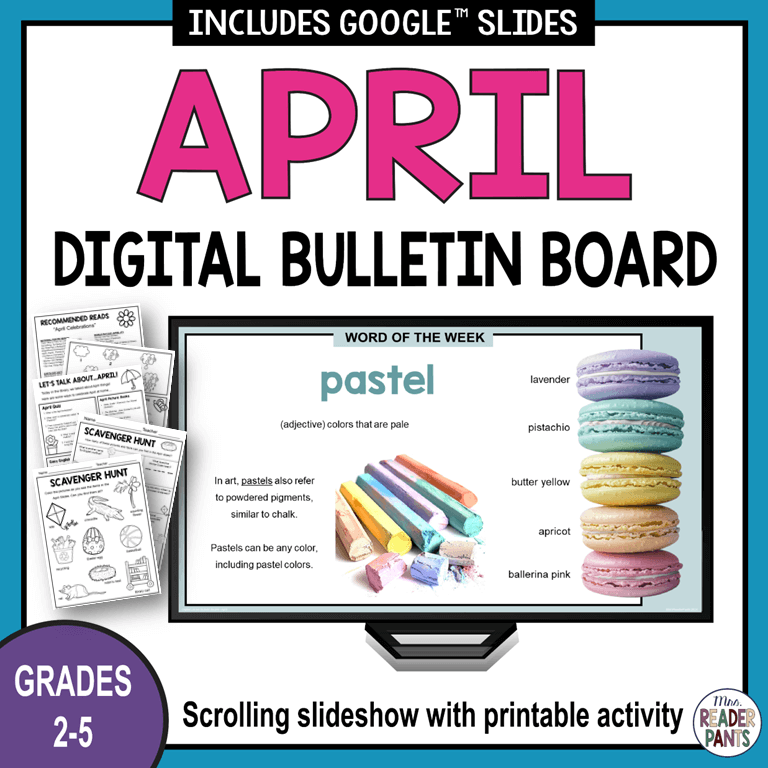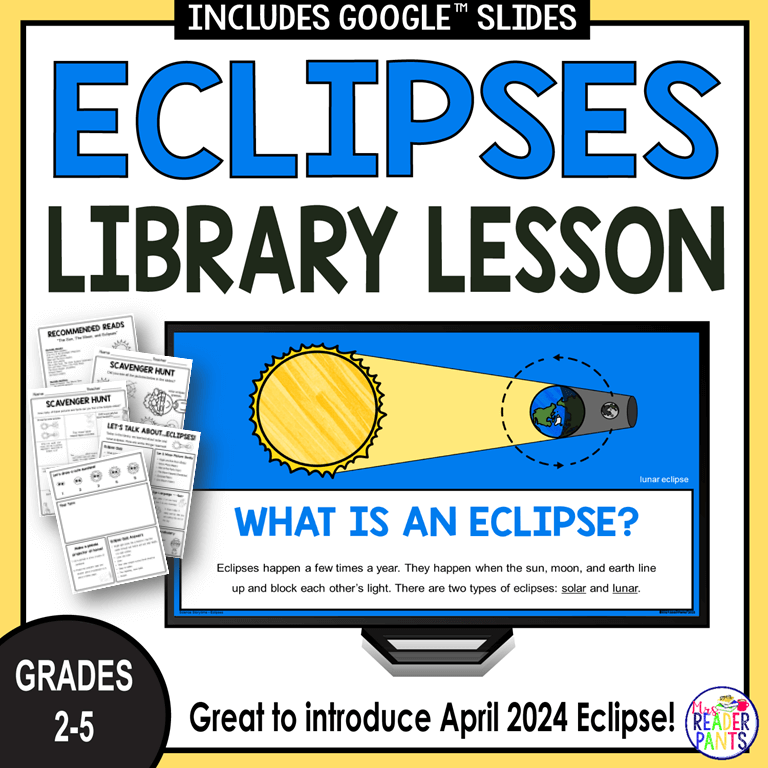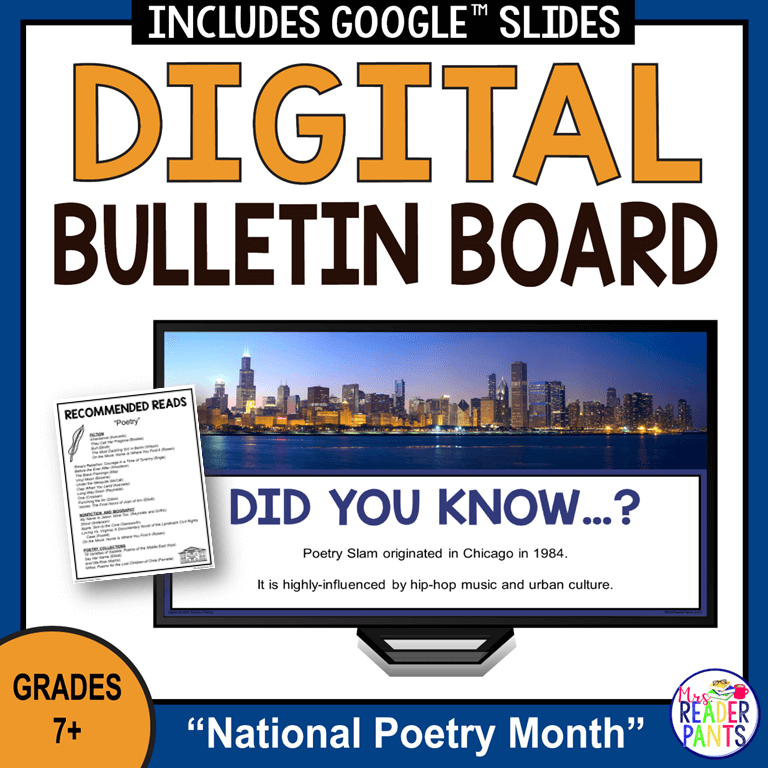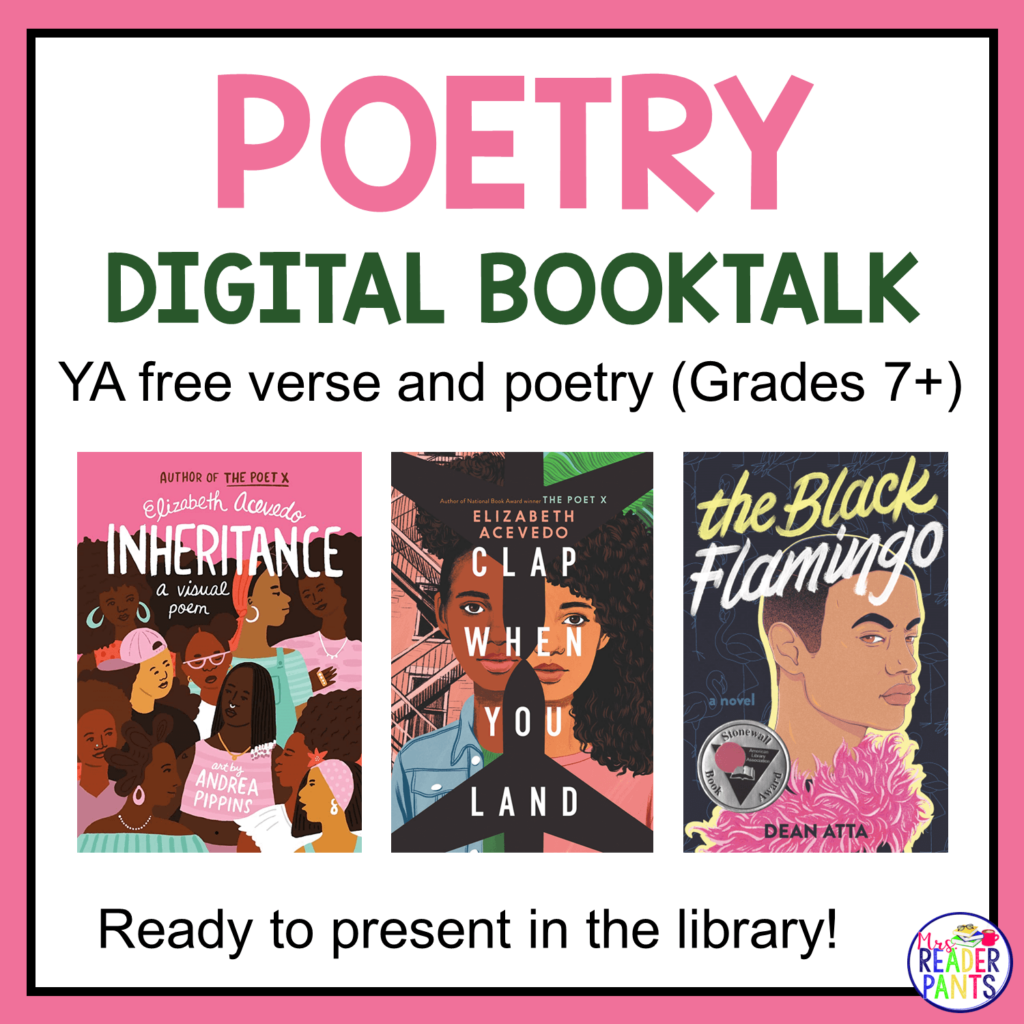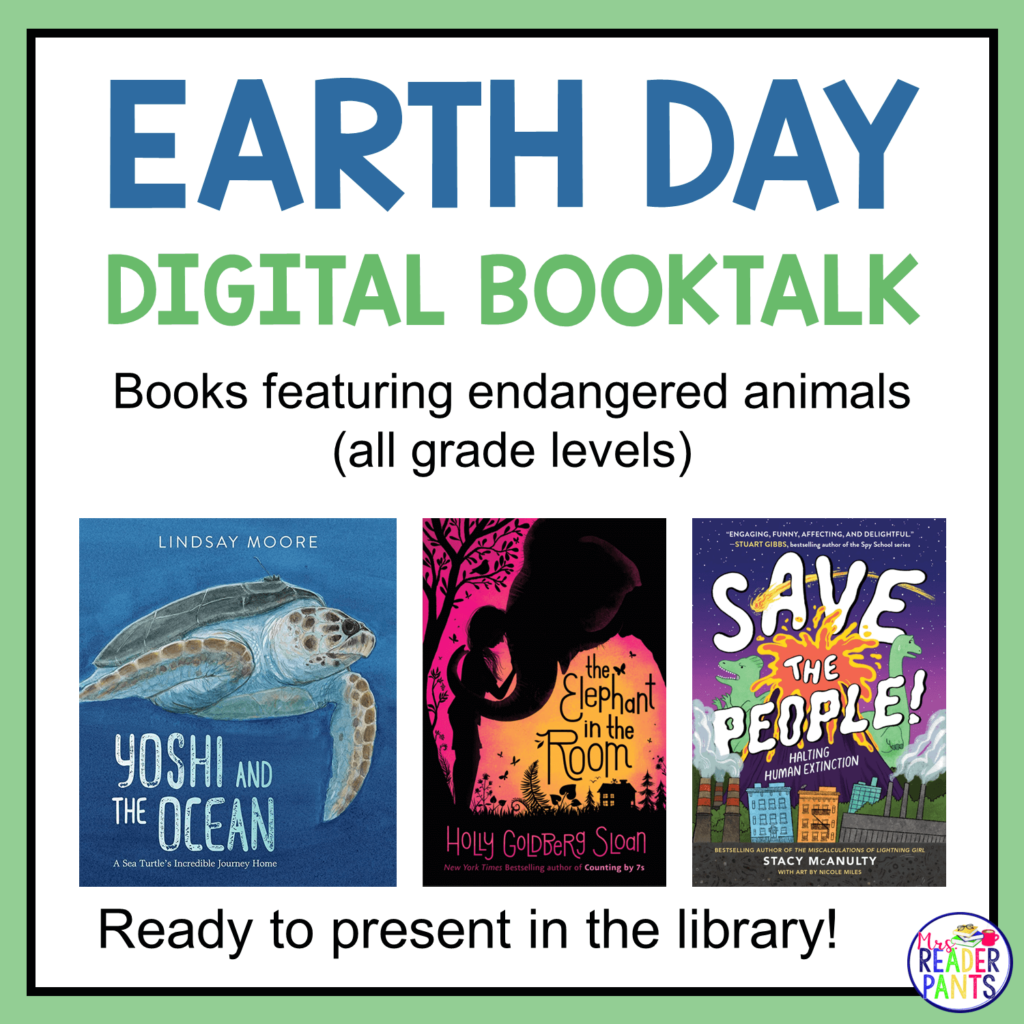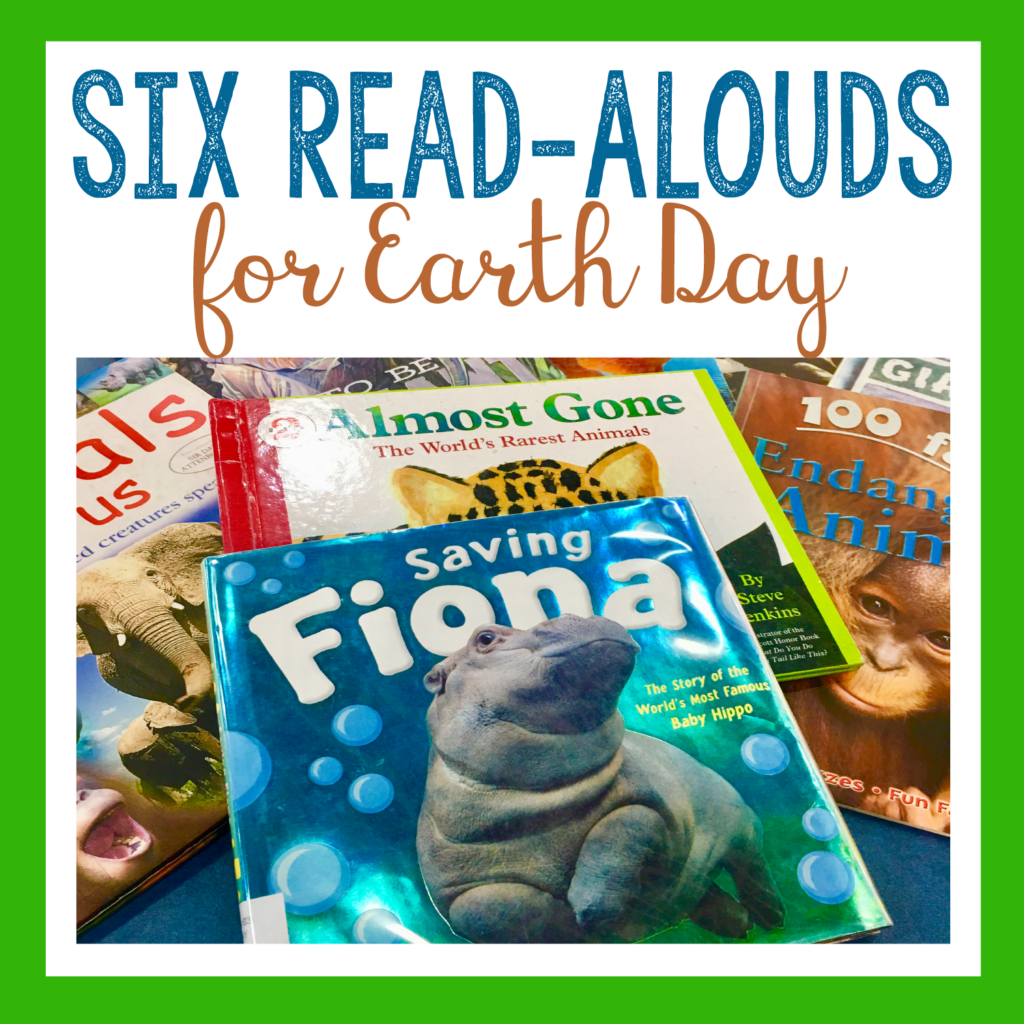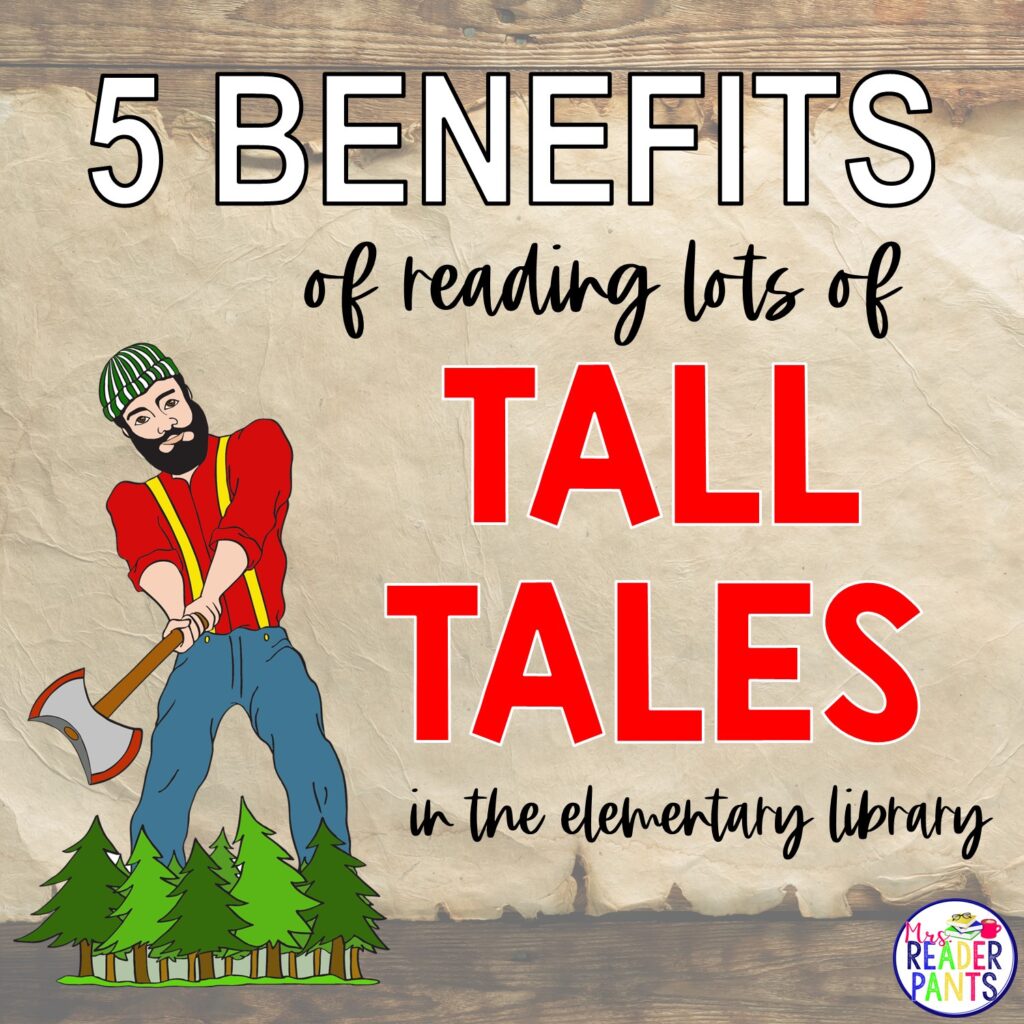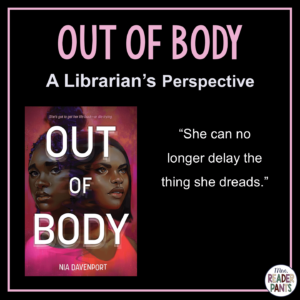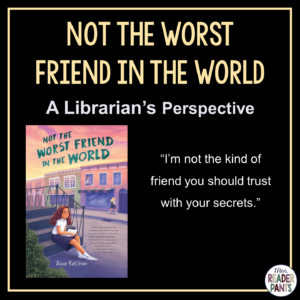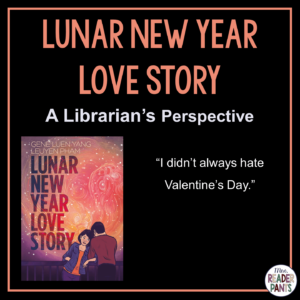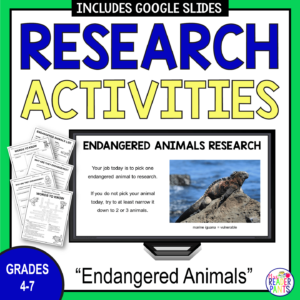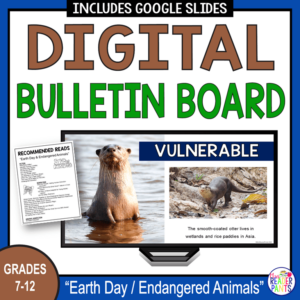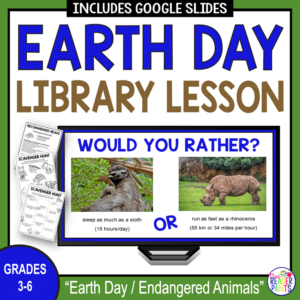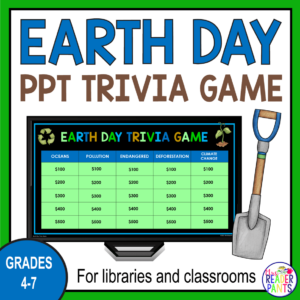It’s almost Earth Day!!!! Earth Day is April 22 every year, and it is probably my favorite celebration in the library!
No matter their age, students really get into Earth Day activities and concepts like plastic pollution, water conservation, planting trees, and endangered animals. I love that they get so passionate about the state of our earth and what we can do to help keep it beautiful and healthy.
Today is Day Two of my three-day blog mini-series of Earth Day Activities.
Yesterday, I shared ideas for middle school library lessons about endangered animals. Today’s ideas focus on great picture book lessons about endangered animals. Tomorrow, I will focus on novels about endangered animals. I either have taught or would teach these lessons with students in Grades 2-7. I think they could also be adapted for younger students as well.
PICTURE BOOKS THAT FEATURE ENDANGERED ANIMALS
ALMOST GONE BY STEVE JENKINS

This book simply and colorfully profiles 28 currently endangered and extinct animals.
It was published in 2006, so it would be interesting for students to research the current status of these animals (Spoiler alert: not all have made it to 2024).
Each animal includes a colorful illustration and short description of the animal including: location, estimated number remaining, size, habitat, and reasons for its inclusion on the endangered or extinct list.
This book is too lengthy to read aloud the entire book out loud. For read-alouds, I really like: Yangtze River Dolphin, California Condor, Miami Blue Butterfly, Golden Lion Tamarin, Giant Stick Insect, and Coelacanth.
It doesn’t really matter which animals you pick, but I do recommend you vary the kind of animals just for some variety. You can read the animal profiles in any order; they still make sense when read in isolation.
Pair this book with a video about endangered animals. This video profiles 22 of the rarest animals on earth. Number 14 is the Yangtze Softshell Turtle. It mentions that out of only three turtles in existence, two are in a zoo in Suzhou, China. Just a few days ago, the female turtle in the zoo died after an artificial insemination procedure. This is the last known female of this species, which virtually guarantees its extinction.
DON’T LET THEM DISAPPEAR by Chelsea Clinton

This book just released earlier this month and is similar to Almost Gone listed above. Don’t Let Them Disappear profiles twelve commonly-known endangered animals. Each animal is accompanied by a full-color illustration and a description of the animal’s habitat, daily activities, diet, and reasons it is endangered. Each animal profile is followed by the title refrain, “Don’t let them disappear.”
This one is a bit shorter to read-aloud than Almost Gone, but depending on the class, I still might not read the entire book aloud from cover-to-cover. Instead, I would show students the book and read select profiles to start a greater discussion about endangered animals.
Grade levels: This one is for the younger set–I generally recommend PreK-Grade 3. This would also make a great choice for older ELL students since it uses common animal names-tiger, whale, rhino, panda–rather than more obscure species or technical species names.
IVAN: THE REMARKABLE TRUE STORY OF THE SHOPPING MALL GORILLA by Katherine Applegate

If you want to tell the true story of Ivan the gorilla, but you prefer a picture book format (or The One and Only Ivan is checked out), this one is great! It begins with Ivan’s life as a young mountain gorilla in the Democratic Republic of the Congo and takes readers from his capture to a concrete “domain” in a suburban mall zoo.
I generally save this story for a read-aloud of The One and Only Ivan, so for the picture book, I recommend PreK-Grade 2. I have, however, used this for middle school Grade 6 and ELLs. It’s great if your copy of Ivan is checked out, which is sometimes is.
See tomorrow’s post for more ideas for The One and Only Ivan.
I love showing students this video of a troop (because they’re called troops) of curious mountain gorillas touching a photographer. I love the HUGE silverback that just sits back and watches it all. The photographer has great composure, even when the silverback came in for a closer look.
I showed this video to an eighth grade class yesterday when I did a read-aloud from The One and Only Ivan. At one point during the three-minute video, I looked around the room to see many students smiling as they watched the cute gorillas.
IVAN’S INTERESTING HISTORY
This 15-minute video was created by Zoo Atlanta to publicize Ivan’s history. It’s super-interesting, humorous, and sad all at the same time. I love the story about the burlap bags around 8 minutes in. Sadly, we can’t always see the photos she’s referring to in the presentation because the photos are proprietary. I wish we could have seen the sombrero photos!
OWEN AND MZEE: THE TRUE STORY OF A REMARKABLE FRIENDSHIP by Isabella Hatkoff, et. al.

This is such a fun story to tell! In the aftermath of the December 26, 2004 Indonesian tsunami, a baby hippo washed up near the coastal village of Malinda, Kenya.
Villagers who found the hippo were surprised to find him alive and worked for hours to free him from the coral reef on which the hippo was stranded. Ultimately, the hippo–whom they named Owen–was taken to a Kenyan wildlife sanctuary called Haller Park.

Unable to house Owen with the older, potentially aggressive, hippos at the park, caretakers put Owen in a smaller enclosure with smaller, gentler animals. It is there that Owen started following an old, grouchy tortoise named Mzee around.
What was even more shocking was that Mzee allowed Owen to follow him and snuggle up to him!
There is truly SO MUCH you can do by pairing these two books! It’s a fascinating story of friendship and how it saved this baby hippo’s life after he lost his mother and his pod.
According to this book, Owen might have died if it weren’t for Mzee’s friendship. Mzee taught Owen–who was still nursing when he lost his mother–how to eat grass and leaves. Young Owen also hid behind Mzee when he was frightened and snuggled with Mzee at night.
Recommended for: With younger students up to Grade 2 or 3, I read the picture book A Mama for Owen and just show the photographs of this book.
For older students, I have used this up to seventh grade. This book is too long to read-aloud, so I usually just read the first few pages, starting at the beginning (“When Owen was a baby…”) and ending a few pages later at the end of the paragraph that begins with “News of this astonishing…” My book does not include page numbers, but this totals the first three full-page spreads and the left-side of the fourth full-page spread. Be sure to show the pictures!
Possible activity: Have students research where Owen and Mzee are today. Are they still in Kenya? Are they still friends? (Spoiler alert: As of April 2019, both are still at Haller Park, but they are no longer in the same enclosure because Owen is too big and could hurt Mzee. Owen now lives with a pod of other hippos at the park.
VIDEO MONTAGE OF OWEN & MZEE PHOTOS
This video starts with Owen’s arrival at Haller Park. He is still in the back of a truck with nets over him, and he is clearly terrified. Show this to students to emphasize just how difficult it was for the workers to help Owen.
The entire video is nearly 30 minutes, but the opening scene is only about 4 minutes. There are also some cute scenes from minutes 5-8 that show Owen’s first days with Mzee.
The Owen & Mzee website is also a great resource for video, photos, and online activities about these unlikely friends.
From the home page, click on the DOCUMENTARY link for news video about Owen and Mzee. The singalongs are also super-cute for younger students, and the students can record themselves singing along with the animals.
And don’t miss MZEE’S SECRET for a photo that explains why Owen might have started following Mzee around in the first place.
SAVING FIONA: THE STORY OF THE WORLD’S MOST FAMOUS BABY HIPPO by Thane Maynard

Having a bad day? Pull out Saving Fiona and just try not to smile at all that cuteness. No one can resist that adorable hippo sass on the front cover. No one!
Fiona is the first premature baby hippo born in captivity and raised by humans. She was born in January 2017 at the Cincinnati Zoo, two months early and severely underweight.
Fiona’s future was uncertain, but thanks to a large team of caregivers, Fiona defied the odds and improved every day.
This book contains some of the cutest photos of hippos I’ve ever seen! The author, Thane Maynard, is the Director of Cincinnati Zoo & Botanical Garden. He also appears in Fiona’s first video, which is certain to evoke plenty of “awwws” from your students!
I read this book to a sixth grade class this week, and it was a hit! After we read, a group of students was standing at a table looking at the photos together. And that me go “awwww!”
VIDEO FROM FIONA’S YOUTUBE CHANNEL FROM THE CINCINNATI ZOO:
I’M A MANATEE by John Lithgow

I discovered this adorable book many years ago when I was an elementary librarian. I love John Lithgow, and I’ve memorized parts of the song from the accompanying CD (yes, I’m singing it in my head right now).
I do not recommend reading this one aloud. Instead, play the CD as you turn the pages. This book and song will be an instant favorite with your elementary students!
What’s also great about I’m a Manatee are the illustrations that show reasons why the manatee needs our help. Illustrations show the manatee swimming among garbage in the water. There’s boats speeding through the river where the manatees swim.
After the read-aloud, I go back and show students these illustrations and talk about why manatees are endangered. I then show real-life photos of manatees from nonfiction books. Many nonfiction books–even at the elementary level–contain photos of manatee injuries and scars from collisions with speedboat propellers.
BOATING TIPS TO KEEP MANATEES SAFE
Okay, so most elementary students are not driving boats, and most of them do not live in areas with manatees. But this one-minute video is great to show students how easy it is for manatees to be injured by passing boats. And as an added bonus, the video narrator also mentions disposing of trash properly so manatees aren’t injured by it.
Looking for more Earth Day ideas?
Tomorrow will be my third and final post in this mini-series. I’ll be talking about read-aloud novels and sharing more fun videos and teaching ideas!
OTHER POSTS IN THIS SERIES:
EARTH DAY RESOURCES FROM MY STORE:

